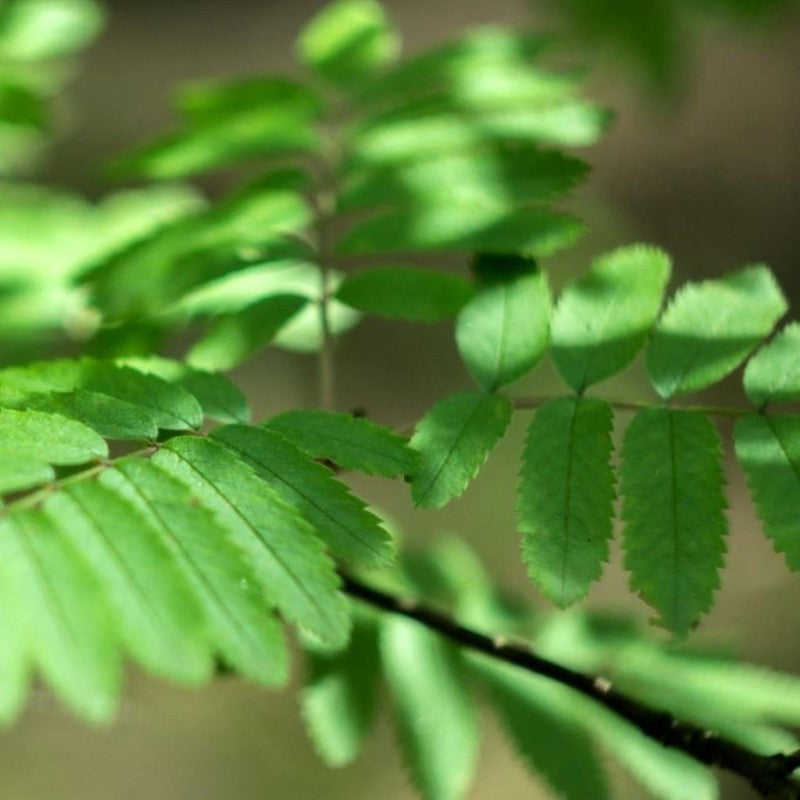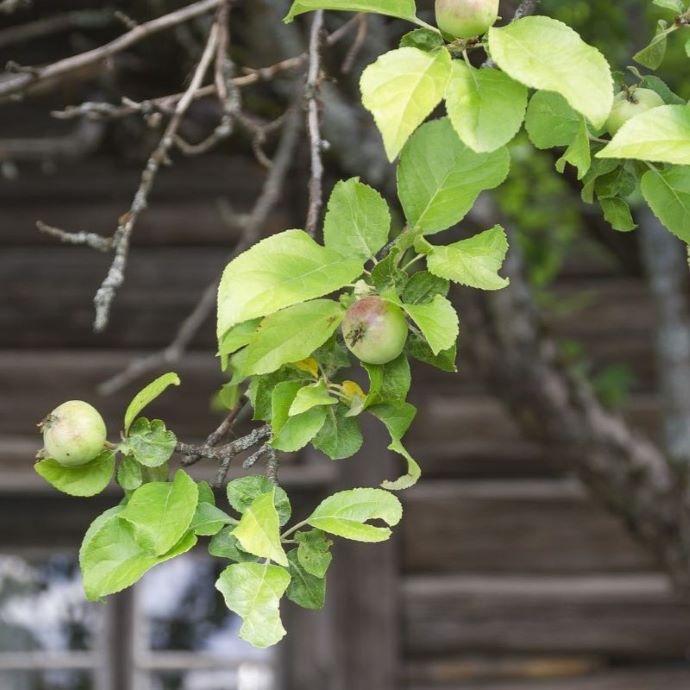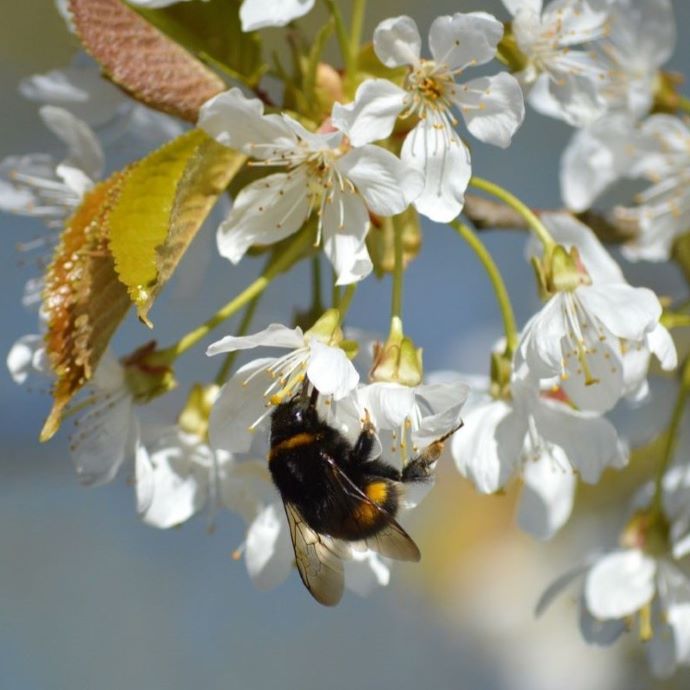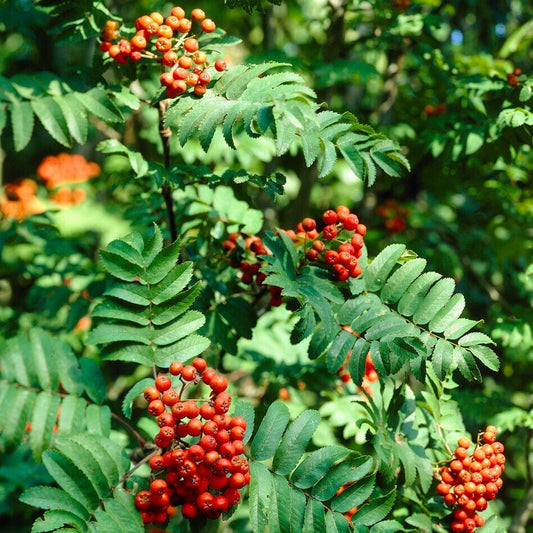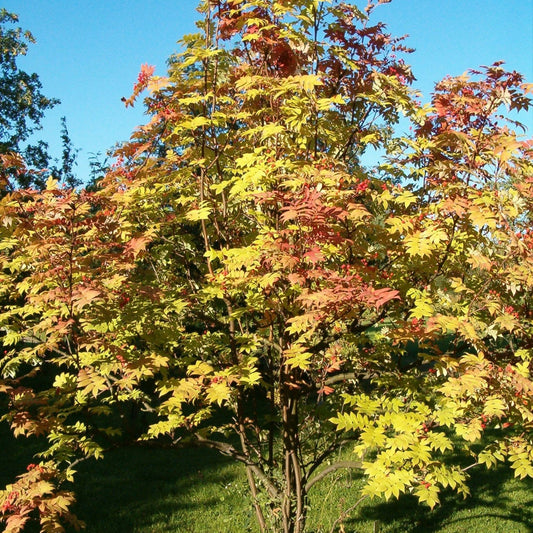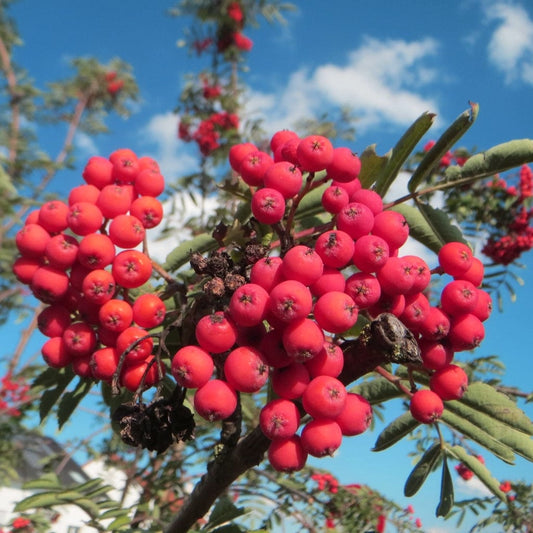Rowan: The Tree of Life
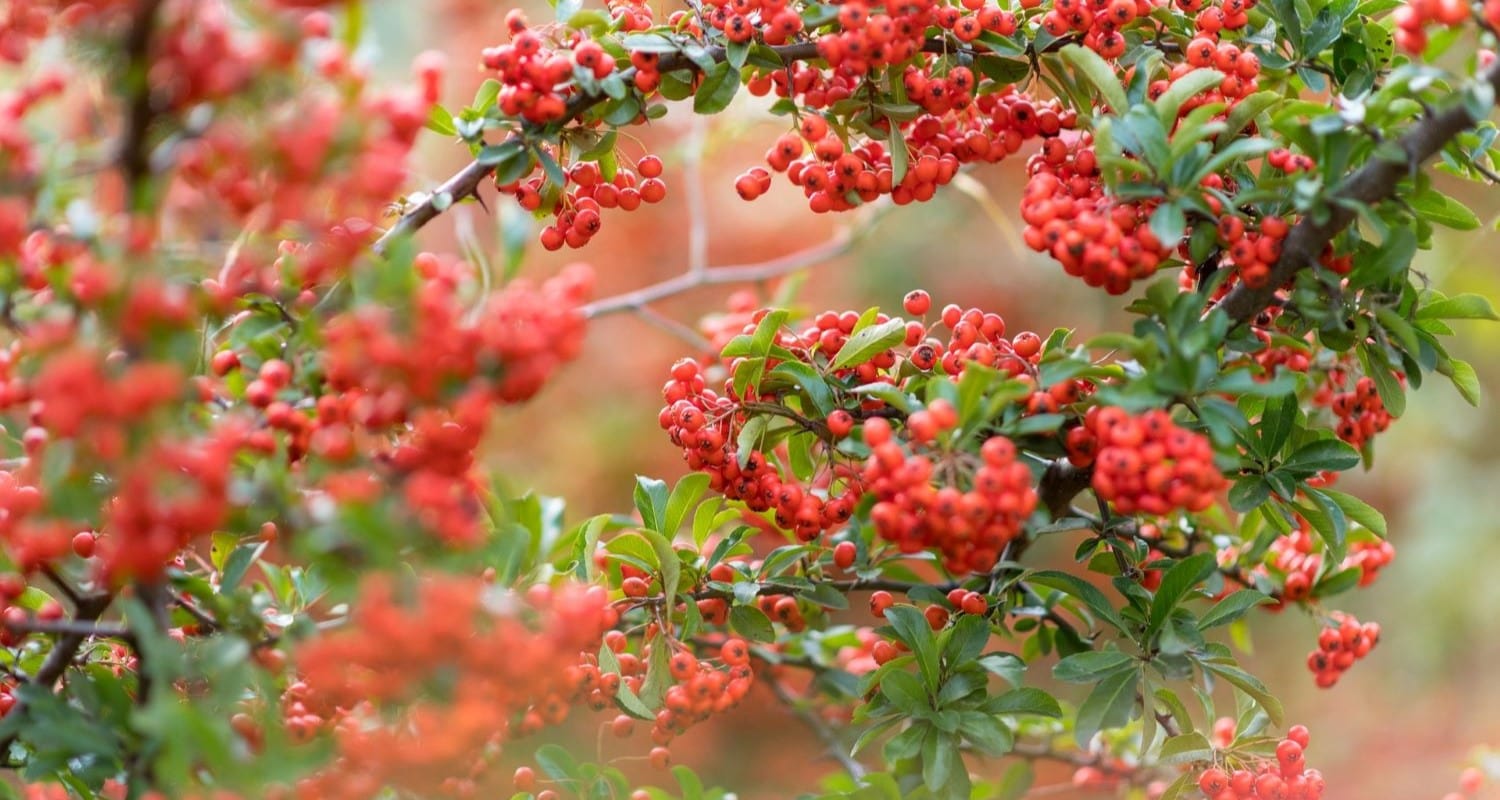
Four seasons of a mountain ash rowan tree
Rowan trees are one of those wonderful species that look beautiful all year round, heralding the change of each season with their spring blossom, summer foliage, autumn colour and winter berries.
In Celtic mythology, the rowan is known as The Tree of Life. When you consider its value to insects, birds and mammals, it’s no wonder. Rowan trees are famous for attracting birds to your garden with their clusters of bright red, yellow, pink or orange berries, but did you know that they also support bees and other pollinating insects, thirty five species of moths and butterflies, and numerous mammals? Most of us plant rowans for their looks, but they might also be one of the best things you can do for your local ecosystem.
Here we take a closer look at the rowan tree’s year and what you can expect to see each season.
Jump to:
Spring
In spring you’ll find your rowan tree covered in dense clusters of creamy white blossom, on flower heads approximately 10cm wide. Each flower has five petals and is hermaphrodite, containing both male and female parts. The flowers are an important source of nectar and pollen for insect species including bees and beetles, which pollinate the rowan.

Summer
Summer sees the rowan tree in the full glory of its lush green foliage. The leaves consist of up to fifteen leaflets in a pinnate form (arranged in pairs on either side of the stalk).
You might see the caterpillars of several moth species at this time of year, including the Brimstone Moth, Buff-tip, Welsh Wave and Orange Underwing. The adult Buff Tip moths fly in June and July and you might spot them around this time resting on the branches, disguised as broken twigs!

Autumn
The rowan tree’s berries ripen in autumn, which is when you’ll see a dramatic increase in the numbers of birds visiting your garden. The brightly coloured fruit is a particular favourite of blackbirds, mistle thrushes, redstarts, redwings, song thrushes, fieldfares and waxwings.
Rowan berries can be red, orange, yellow or pink. The tree’s autumn foliage is also stunning, with the leaves taking on fiery tones of yellow, orange and red.

Winter
In winter after the leaves have fallen, the rowan tree’s smooth, silvery-grey bark can be appreciated, as well as its attractive structure. You’ll see soft felt-like buds appearing on the new branches. The berries can last well into winter (presuming the birds haven’t stripped them already!) to remain as a valuable source of food for the wildlife in your garden - it’s not uncommon to see a robin feeding on them in the snow.

Last updated: 13/11/2023

